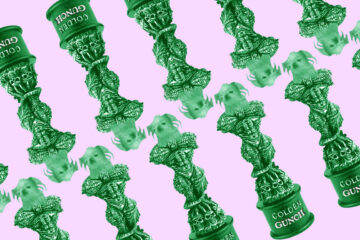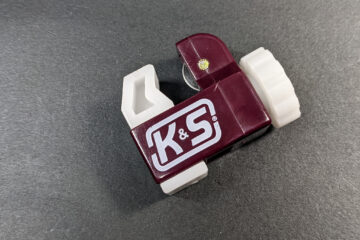Hi, welcome to the fourth part of my guide to teach you what not to do when you make a board, so you can learn from my mistakes. If you missed them, the previous parts are here:
This section of the build has no pictures. Sorry. This is where all the failures happened, and as I wasn’t planning on talking about it at the time, I had no reason to take any photos of all the stuff that went wrong.
Now that the base was complete, I wanted to work on the scenery to go on top. As I said at the start, Catacombs had inspired me, so part of me wanted to do something with walls.
I bought some plasticard. I could painstakingly etch stones into it and even tried painting it, and that was fine, but making that into stable walls proved a bit difficult. First, I tried sticking a few pieces together, but they would just fall down when trying to use the table.
I tried sticking some extra plasticard underneath to be a base, but that then destroyed the aesthetic of the base stone slabs I’d already built.
Using a spare cork board, I tried cutting thicker gaps in the stone slabs to slot the plasticard in, but I had to cut so deep to make it work that the cork fell apart.
The next idea was to stick millput to the card, making the stone effects out of that, and making the stones closer to the bottom thicker to stabilise the card. This did work, but was quite a bit of work, made the walls very heavy and the amount of milliput I’d need was extremely high. I contemplated trying to work with foam, which would be light, but I was worried about how much I’d be able to do neatly without a hot wire cutter.
Homebrew walls were out for now then. I figured the original Warcry scenery would do in that respect. I’d wasted about £10 on testing this stuff out, but at least I had tested it.
So, what to do? I knew I wanted bridges to go over the lava, to enable traversal. I stared at the broken pillars I got with the splats.
One night, very drunk, I bought some 3D printed terrain. A lot of it. All from the Fallen Empires collection from Dark Fantastic Mills so it matched the bits I already had. The set is modular and magnetised.
I think if I’d managed to make walls work myself, I wouldn’t have bought it. This time I didn’t even get a 20% launch discount.
A few weeks later, 3 boxes of plastic arrived. It was honestly very daunting to see. I’d spent just over £200 on plastic, so at least from that point of view it felt like I was getting something for my money.
Mistake number 9 –Don’t break your design principals when drunk. Though I don’t regret this one.
I opened them and proceeded to play. It was working as I wanted, the flexibility of the terrain set matched up with the flexibility of board options well. I soon made a few smaller stone slab squares to seat pillars on if they were in lava to help stabilise everything, but that was easy to do (still need to distress them round the edges and do some osl).
However, I think it was about three months at least before I got to painting these. The reason why, was sanding smooth the 3D print layers. I wore through a large amount of sandpaper and sanding pads trying to smooth the terrain. I think I actually used about £10 worth of sanding pads, and some of the bits still weren’t as smooth as I wanted.
Again, not learning from my earlier mistakes I set to airbrushing them. I thought a sort of black primer and then a zenithal of dark grey upwards, and light grey downwards should make a good start.
Colours I used aside, when painted the issue was still that the terrain wasn’t sanded enough. I resigned myself to having to do more sanding until browsing the internet again I found out about Black Gesso.
£20 worth of acrylic paints later I set about painting over the top. In 1 hour, I had all the stonework complete and drying, compared to the hours sanding and spraying I’d already tried.
The Black Gesso is a lot thicker than airbrushing (which the aim is of course to apply a very thin coat with good coverage). I slapped it on with wild abandon and a big brush. When dried it had filled almost all of the printing lines, but still preserved all the details.
The next step, as advised by Dark Fantastic Mills, was sponging on some dark grey cheap acrylic paint with a kitchen sponge, and then adding some white to it and using a more porous sponge to add texture and almost drybrush some details.
When dry I made three thin washes of Nuln Oil, Agrax Earthshade and Snakebite Leather contrast paint and using the porous sponge dabbed them on randomly, letting the very watery washes run a bit in places, and sometimes mixing them. Given it’s a battleground, I also added some fresh Blood for the Blood God, and mixed some with dark brown paint to make dried blood in places.
There were areas I keep noticing and tidying up, where the light grey is too heavy, or where I wanted to mix and blend the washes a bit more, but in general it’s created a really solid scenery colour in a truly short amount of time.
I had some wooden walkways to add now, these were glued, black gesso’d again, and then I used Rhinox Hide to base them. I drybrushed with a Rhinox and Skrag Brown mix, then some Skrag Brown and Skrag Brown mixed with Averland Sunset, then finally washed with some Agrax Earthshade mixed with Snakebite Leather.
I now had a huge amount of scenery to use on the board.



